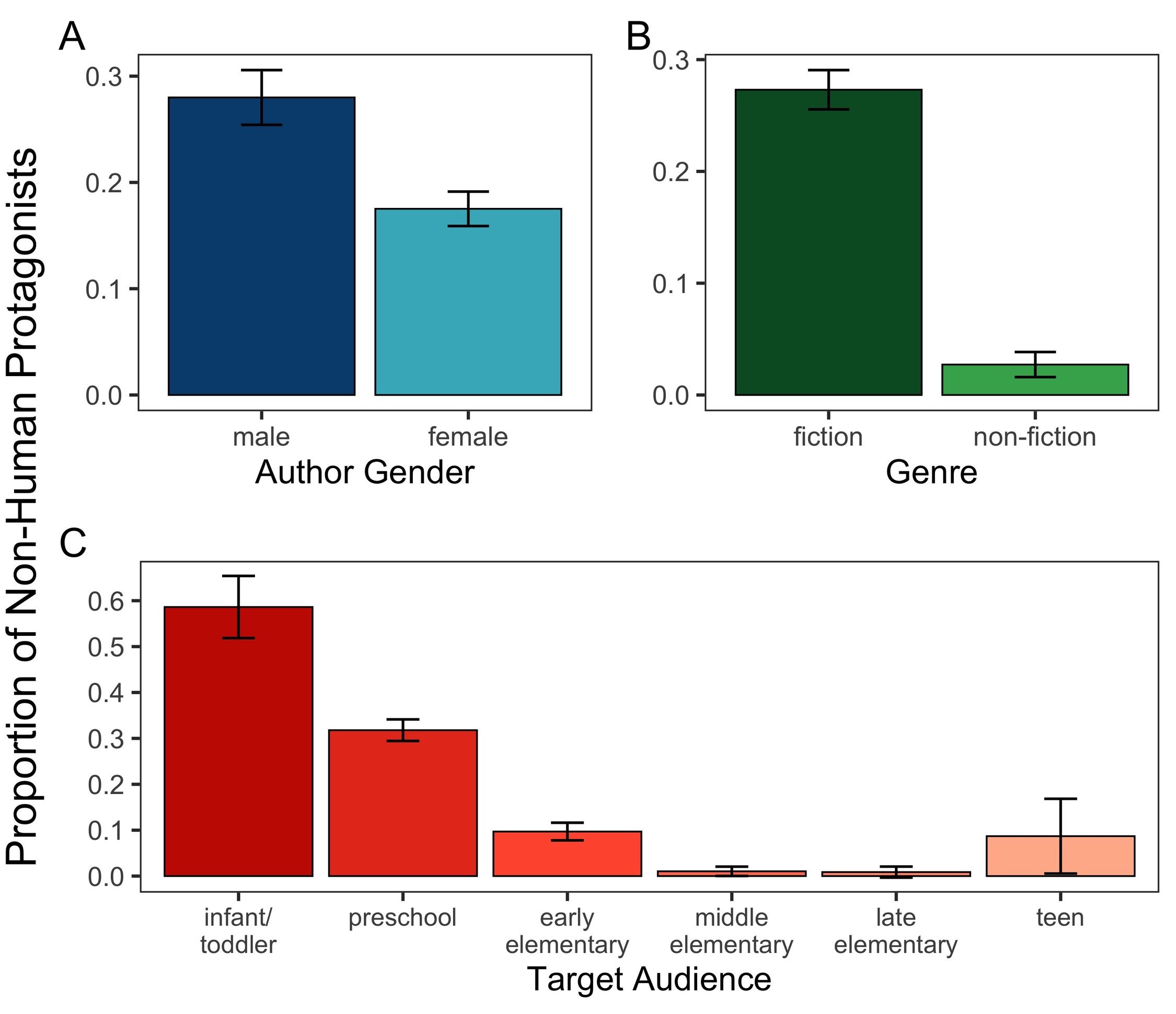Though female representation has increased, it still lags behind. This is especially noteworthy when books are broken down by category — fiction or nonfiction — and the types of characters featured. Non-human characters in fiction were male much more than female, and nonfiction books with a human character were also more likely to be male. The second finding is especially worthy of consideration when it takes into account the historical people being represented in these nonfiction titles; they’re far more likely to be men than women. Over the last sixty years, male authors have better represented main characters as female, but in particular, this holds for books for the youngest audiences. Female authors write more female characters, particularly for older children and in books with human characters. Non-human characters by female authors continue to portray more male characters. The study doesn’t take into account other gender variables, of course, but it does highlight the disconnect between popular perception of an overabundance of stories about female characters and the reality of what’s being published. Read the entire study on PLOS One. Find more news and stories of interest from the book world in Breaking in Books.
